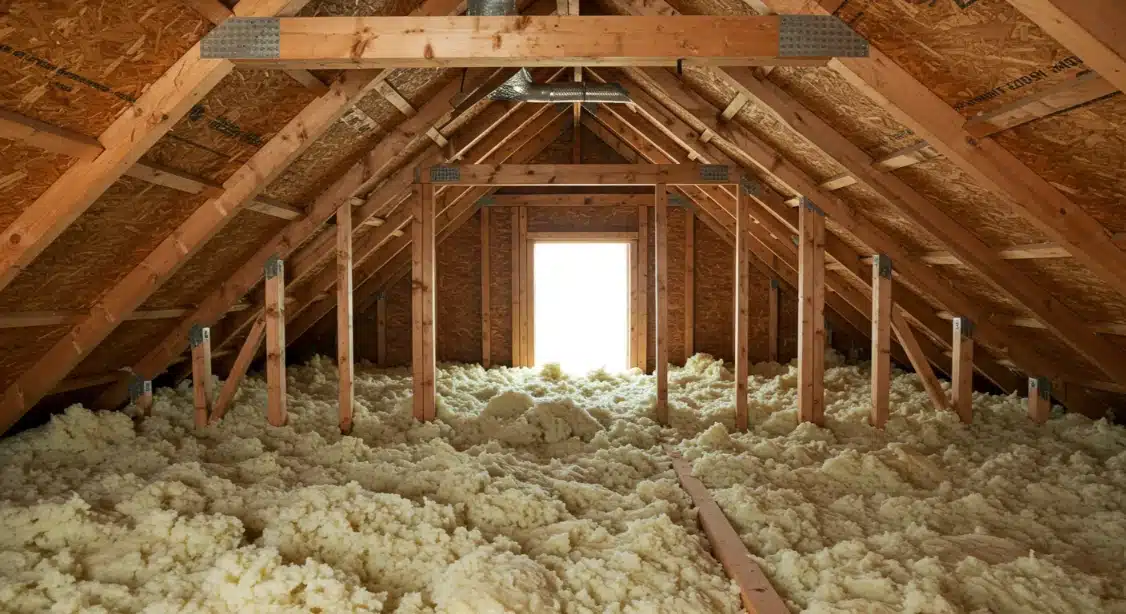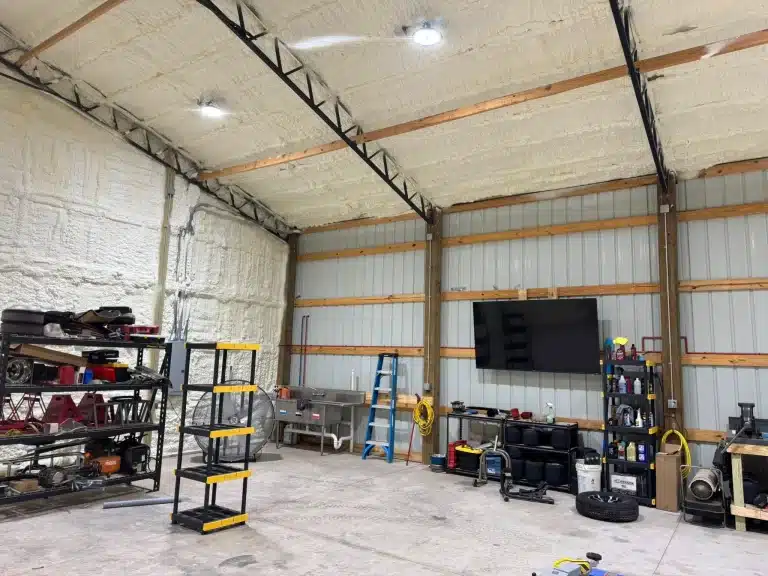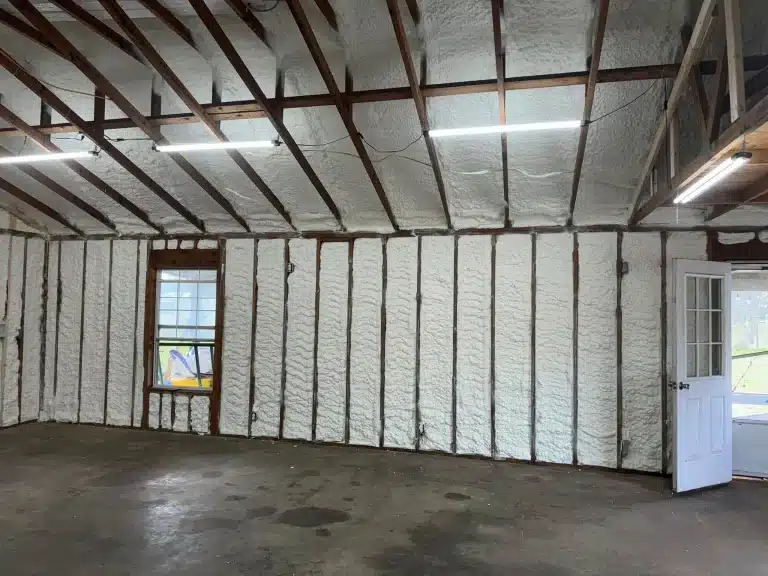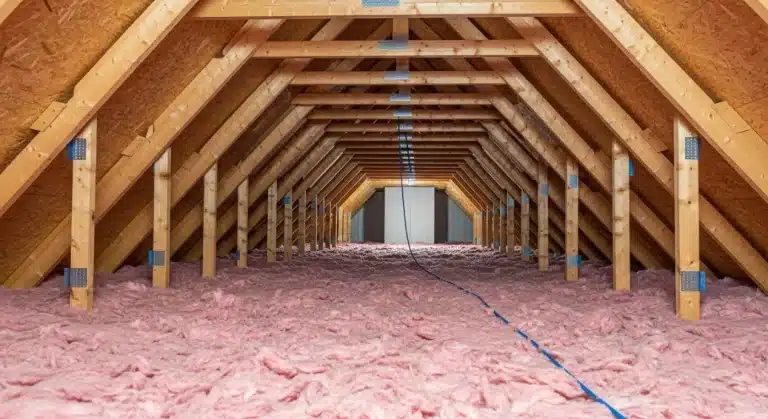Blown-in insulation is an effective method for improving thermal efficiency, reducing energy costs, and enhancing indoor air quality. In Robertsdale, where fluctuating temperatures and humidity levels contribute to dust, allergens, and pollutants, choosing the right insulation can significantly affect air purity. Blown-in insulation helps create a cleaner, healthier indoor environment by reducing airborne contaminants and preventing external pollutants from seeping inside.
How Blown-In Insulation Works
Blown-in insulation consists of small particles made from cellulose, fiberglass, or mineral wool. These materials are installed using specialized equipment that distributes the insulation into wall cavities, attics, and other areas with minimal disruption. The dense composition of blown-in insulation creates an effective barrier against air leakage, which in turn helps maintain better air quality.
Key Benefits of Blown-In Insulation for Indoor Air Quality
1. Reduces Airborne Contaminants
Blown-in insulation helps minimize the infiltration of dust, pollen, and other allergens from outside. Since it fills gaps and voids more effectively than traditional batt insulation, it prevents contaminants from entering the home through cracks and poorly sealed areas.
2. Controls Moisture and Prevents Mold Growth
Excess moisture is a common issue in humid environments like Robertsdale. High humidity levels can lead to mold and mildew growth, both of which contribute to poor air quality. Blown-in insulation helps regulate indoor humidity by reducing condensation buildup, preventing mold spores from spreading through the air.
3. Blocks Outdoor Pollutants
Pollutants from vehicle emissions, industrial activities, and agricultural operations can make their way into homes through unsealed gaps. Blown-in insulation enhances airtightness, limiting the amount of external pollution that enters the indoor space.
4. Reduces Indoor Toxins
Older homes may contain harmful substances such as asbestos or lead-based paint dust, which can become airborne and pose health risks. Installing blown-in insulation in older homes can help contain these toxins and prevent them from circulating in the air.
Choosing the Right Blown-In Insulation Material
The effectiveness of blown-in insulation depends on the material used. Each type offers specific benefits that contribute to improved air quality.
Cellulose Insulation
- Made from recycled paper treated with fire-resistant chemicals.
- Provides superior air-sealing properties.
- Effectively reduces dust circulation.
Fiberglass Insulation
- Composed of tiny glass fibers that trap air and reduce heat transfer.
- Resists mold growth and moisture absorption.
- Non-combustible and long-lasting.
Mineral Wool Insulation
- Offers excellent soundproofing in addition to insulation.
- Highly resistant to moisture and fire.
- Provides a strong barrier against allergens and pollutants.
Professional Installation for Maximum Effectiveness
While DIY insulation projects may seem cost-effective, professional installation ensures optimal coverage and efficiency. Experts use specialized equipment to distribute the insulation evenly, filling all gaps and preventing airflow issues that could lead to poor air quality.
A Smarter Approach to Indoor Comfort
Maintaining good indoor air quality is essential for health and well-being. Blown-in insulation not only improves energy efficiency but also contributes to a cleaner home environment. By sealing air leaks, reducing moisture buildup, and preventing the entry of harmful pollutants, this insulation method helps create a safer and more comfortable living space.
For professional blown-in insulation services in Robertsdale, contact Prestige Insulation Solutions at (850) 429-4969 or email [email protected].
Frequently Asked Questions
How does blown-in insulation compare to traditional insulation for air quality?
Blown-in insulation provides better coverage and seals gaps more effectively than batt insulation, reducing dust infiltration and improving air quality.
Can blown-in insulation help with allergy symptoms?
Yes, by preventing allergens like pollen and dust from entering the home, blown-in insulation can help reduce allergy symptoms and respiratory issues.
Is blown-in insulation safe for people with respiratory conditions?
Fiberglass and cellulose blown-in insulation are designed to be low in volatile organic compounds (VOCs), making them safe for individuals with respiratory concerns.
How long does blown-in insulation last?
With proper installation, blown-in insulation can last 20-30 years, maintaining its effectiveness in air quality improvement and energy efficiency.
Does blown-in insulation prevent mold?
Yes, it helps control humidity levels and limits condensation, reducing the likelihood of mold growth.
Can blown-in insulation be installed in an existing home?
Yes, it is an excellent choice for retrofitting older homes as it can be added without major renovations.
Will blown-in insulation help with noise reduction?
Yes, it adds a soundproofing layer that helps block external noise, contributing to a quieter indoor environment.
Is blown-in insulation environmentally friendly?
Cellulose insulation is made from recycled materials, making it an eco-friendly option that improves air quality while reducing environmental impact.
What areas of a home benefit most from blown-in insulation?
Attics, walls, and crawl spaces benefit the most as they are common areas where air leaks and pollutants enter.
How can I schedule a consultation for insulation services?
To schedule an assessment, contact Prestige Insulation Solutions at (850) 429-4969 or email [email protected].






